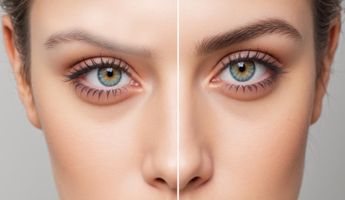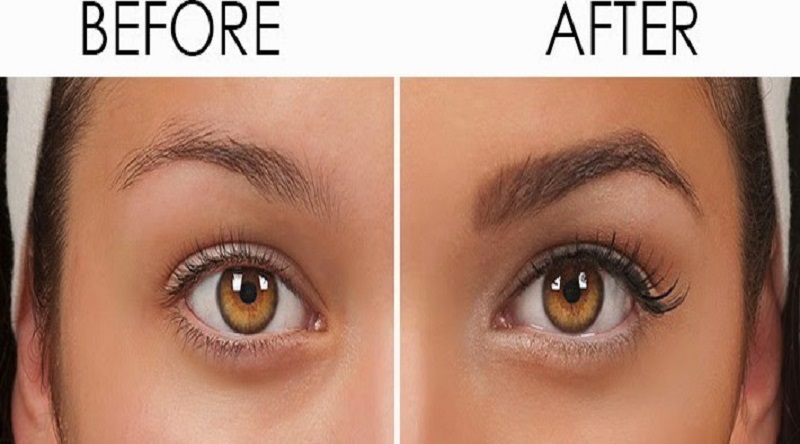Eyebrow Hair Transplant in Ireland
Search and Compare the Best Clinics and Doctors at the Lowest Prices for Eyebrow Hair Transplant in Ireland

Find the best clinics for Eyebrow Hair Transplant in Ireland
No pricing info available
India offers the best prices Worldwide
Price: $ 136
The Beauty Salon, located in Dublin 1, Dublin, Ireland offers patients Eyebrow Hair Transplant procedures among its total of 23 available procedures, across 5 different specialties. Currently, there's no pricing information for Eyebrow Hair Transplant procedures at The Beauty Salon, as all prices are available on request only. All procedures and treatments are undertaken by the lead specialist at the Hospital, and they are not accredited by any recognized accreditations institutes
- Home
- Ireland
WHY US?
At Medijump, we're making medical easy. You can search, compare, discuss, and book your medical all in one place. We open the door to the best medical providers worldwide, saving you time and energy along the way, and it's all for FREE, no hidden fees, and no price markups guaranteed. So what are you waiting for?

Free

Best Price

Widest Selection

Risk-Free
What you need to know about Eyebrow Hair Transplant in Ireland

Eyebrow hair transplant is a cosmetic procedure to transfer hair grafts from one part of your body to your brow area. The goal of this procedure is to make new hair grow from the transplanted grafts to produce a fuller and natural appearance. If you are not happy with the way your eyebrows look, eyebrow hair transplant can be your more permanent solution to makeup products or eyebrow micro-blading.
What does a Eyebrow Hair Transplant Procedure Involve?
This procedure is very similar to a traditional hair transplant. You are given general anesthetic, then your doctor makes small incisions at the follicle in the donor sites (usually the hairs above your ears). After that, small incisions are made at the sites of transplantation in your eyebrows and the hair follicles are placed. Any stitches will be placed in strategic positions so the scars are virtually unnoticeable.
How Long Should I Stay in Ireland for a Eyebrow Hair Transplant Procedure?
You may be able to leave the hospital immediately after the procedure. Plan to stay in Irelandfor about 3 to 4 days for the initial consultation, the actual procedure, as well as a follow-up appointment to monitor your healing and removal of stitches.
What's the Recovery Time for Eyebrow Hair Transplant Procedures in Ireland?
The recovery time is relatively quick. You should avoid strenuous exercises for about 3 weeks, but you may be able to return to work and most of your activities in about 5 days.
What sort of Aftercare is Required for Eyebrow Hair Transplant Procedures in Ireland?
Your doctor will give you detailed instructions on how to care for your new eyebrows. You need to avoid touching or picking at your eyebrows. After several months, your new brow hairs will start to grow and you may trim them to your desired length. There are generally no dietary restrictions after the procedure.
What's the Success Rate of Eyebrow Hair Transplant Procedures in Ireland?
Eyebrow hair transplant is effective, highly successful, and safe. However, it is better to be informed about the potential side effects and risks that the procedure carries, including nerve damage, excessive bleeding, swelling; bruising, scarring, infection, and the new follicles that do not produce new hairs.
Are there Alternatives to Eyebrow Hair Transplant Procedures in Ireland?
Although hair transplant is currently the only procedure that offers a fuller and permanent brow hair, not everyone can undergo the procedure. If you are not an ideal candidate for the procedure, you can undergo eyebrow micro-blading or eyebrow tattoo.
What Should You Expect Before and After the Procedure
Before eyebrow hair transplant, you may not like the look of your eyebrow because you over-plucked or waxed it in the past, or you have an injury around the area. After the procedure, you should have a fuller, thicker eyebrow that looks natural and you will not need makeup to fill in your eyebrows anymore. The procedure may also boost your self-confidence.
Whilst the information presented here has been accurately sourced and verified by a medical professional for its accuracy, it is still advised to consult with your doctor before pursuing a medical treatment at one of the listed medical providers
No Time?
Tell us what you're looking for and we'll reachout to the top clinics all at once
Enquire Now

Popular Procedures in Ireland
Prices Start From $126

Prices Start From $347

Prices Start From $220

Prices Start From $500

Recommended Medical Centers in Ireland for Eyebrow Hair Transplant

- Interpreter services
- Translation service
- Religious facilities
- Medical records transfer
- Medical travel insurance
- Health insurance coordination
- TV in the room
- Safe in the room
- Phone in the room
- Private rooms for patients available

- Interpreter services
- Translation service
- Religious facilities
- Medical records transfer
- Medical travel insurance
- Health insurance coordination
- TV in the room
- Safe in the room
- Phone in the room
- Private rooms for patients available

- Interpreter services
- Translation service
- Religious facilities
- Medical records transfer
- Medical travel insurance
- Health insurance coordination
- TV in the room
- Safe in the room
- Phone in the room
- Private rooms for patients available

- Interpreter services
- Translation service
- Religious facilities
- Medical records transfer
- Medical travel insurance
- Health insurance coordination
- TV in the room
- Safe in the room
- Phone in the room
- Private rooms for patients available

- Interpreter services
- Translation service
- Religious facilities
- Medical records transfer
- Medical travel insurance
- Health insurance coordination
- TV in the room
- Safe in the room
- Phone in the room
- Private rooms for patients available

- Interpreter services
- Translation service
- Religious facilities
- Medical records transfer
- Medical travel insurance
- Health insurance coordination
- TV in the room
- Safe in the room
- Phone in the room
- Private rooms for patients available

- Interpreter services
- Translation service
- Religious facilities
- Medical records transfer
- Medical travel insurance
- Health insurance coordination
- TV in the room
- Safe in the room
- Phone in the room
- Private rooms for patients available

- Interpreter services
- Translation service
- Religious facilities
- Medical records transfer
- Medical travel insurance
- Health insurance coordination
- TV in the room
- Safe in the room
- Phone in the room
- Private rooms for patients available

- Interpreter services
- Translation service
- Religious facilities
- Medical records transfer
- Medical travel insurance
- Health insurance coordination
- TV in the room
- Safe in the room
- Phone in the room
- Private rooms for patients available

- Interpreter services
- Translation service
- Religious facilities
- Medical records transfer
- Medical travel insurance
- Health insurance coordination
- TV in the room
- Safe in the room
- Phone in the room
- Private rooms for patients available
Eyebrow Hair Transplant in and around Ireland
Introduction
Ireland, also known as the Republic of Ireland, is a country located in north-western Europe that occupies 26 of 32 counties on the island of Ireland. The country’s breath-taking landscape, wonderful people, and fascinating history have made it an unforgettable destination for many visitors. Aside from its beauty, more and more people also come to Ireland for high-quality healthcare. The country is a newcomer to the medical tourism market. However, it’s seen as an increasingly attractive destination due to the reasonably priced and high standard of clinical care available in the country. Most foreign patients come for cosmetic surgery and dental treatments, but many hospitals and clinics in the country offer a wide variety of services, such as cardiology, pathology, pulmonary, and gynecology. Also, the Joint Commission International has accredited several hospitals in the country, most of which are located in Dublin.
Popular Cities and Regions in Ireland
Ireland’s capital and largest city, Dublin, is the most popular tourist destination within the country. In fact, it’s the fourth most visited European capital. It’s filled with excellent pubs serving the perfect pint of Guinness, amazing Georgian architecture, and layers of fascinating history. Tourists in this city usually visit the Guinness Storehouse Factory, tour the Old Jameson Distillery, admire the Spire of Dublin, explore Dublin Castle, and marvel at the beauty of St. Patrick’s Cathedral. Another famous city is Cork, which is the second-largest city in the country. It’s a youthful cosmopolitan city packed with artisan coffee bars and snug pubs. Tourists usually come to kiss the Blarney Stone for good luck, enjoy the coastal landscape in Mizen Head, or hike around Gougane Barra. Other popular cities and towns include Galway, Killarney, Kilkenny, and Letterkenny.
Transport in Ireland
The main airport in Ireland is Dublin Airport. It connects the country with numerous cities around the world, including New York, Abu Dhabi, and Hong Kong. Trains and buses are available to travel around the country. However, public transportation is generally sparse in rural areas. Therefore, renting a car is the best mode of transport. Taxis and Uber are available to travel inside major cities.
Visas in Ireland
Ireland has opted out of the Schengen Area. The country allows all EU citizens, as well as citizens of 56 other countries (such as the UAE and the US), to stay without a visa for up to 90 days. Citizens of other countries are required to apply for a visa in advance.
Weather in Ireland
Summer (June – September) provides plenty of sunshine and lower levels of rainfall, with an average temperature of 14°C - 16°C. Winter (October – February) is chilly, with ample rainfall and some snow. Spring and autumn are generally pleasant, with warmer temperatures and more sunshine.
Additional Info
- Local Currency: The official currency is the euro. 1 EUR is approx. 1.08 USD.
- Money & Payments: ATMs are easy to find. Credit and debit cards are widely accepted. Tipping is expected in some places, typically 10% for decent service.
- Local Language: There are several languages used in Ireland. English has been the predominant first language since the late 18th century, but Irish is still widely used by a small percentage of the population.
- Local Culture and Religion: The constitution of Ireland guarantees freedom of religion. Christianity is the largest religion. However, Islam, Hinduism, Judaism, Buddhism, Neo-Paganism, and other religions are present.
- Public Holidays: Some of the most celebrated public holidays are New Year’s Day, St. Patrick’s Day, Easter Monday, Christmas Day, and St. Stephen’s Day.
Popular Searches
- Plastic Surgery in Thailand
- Dental Implants in Thailand
- Hair Transplant in Thailand
- Breast Augmentation Thailand
- Gastric Sleeve in Thailand
- Gender Reassignment Surgery in Thailand
- Laser Hair Removal in Bangkok
- Botox in Bangkok
- Dermatology in Bangkok
- Breast Augmentation in Bangkok
- Coolsculpting in Bangkok
- Veneers in Turkey
- Hair Transplant in Turkey
- Rhinoplasty in Turkey
- Stem Cell Therapy in Mexico
- Rhinoplasty in Mexico
- Liposuction in Mexico
- Coolsculpting in Tijuana
- Rhinoplasty in Korea
- Scar Removal in Korea
- Gastric Sleeve in Turkey
- Bone Marrow Transplant in India
- Invisalign in Malaysia
- Plastic Surgery in the Dominican Republic
- Tummy Tuck in the Dominican Republic
- Plastic and Cosmetic Surgery in Poland
- Rhinoplasty in Poland
- Hair Implant in Poland
- Dental Implants in Poland
- IVF in Turkey
